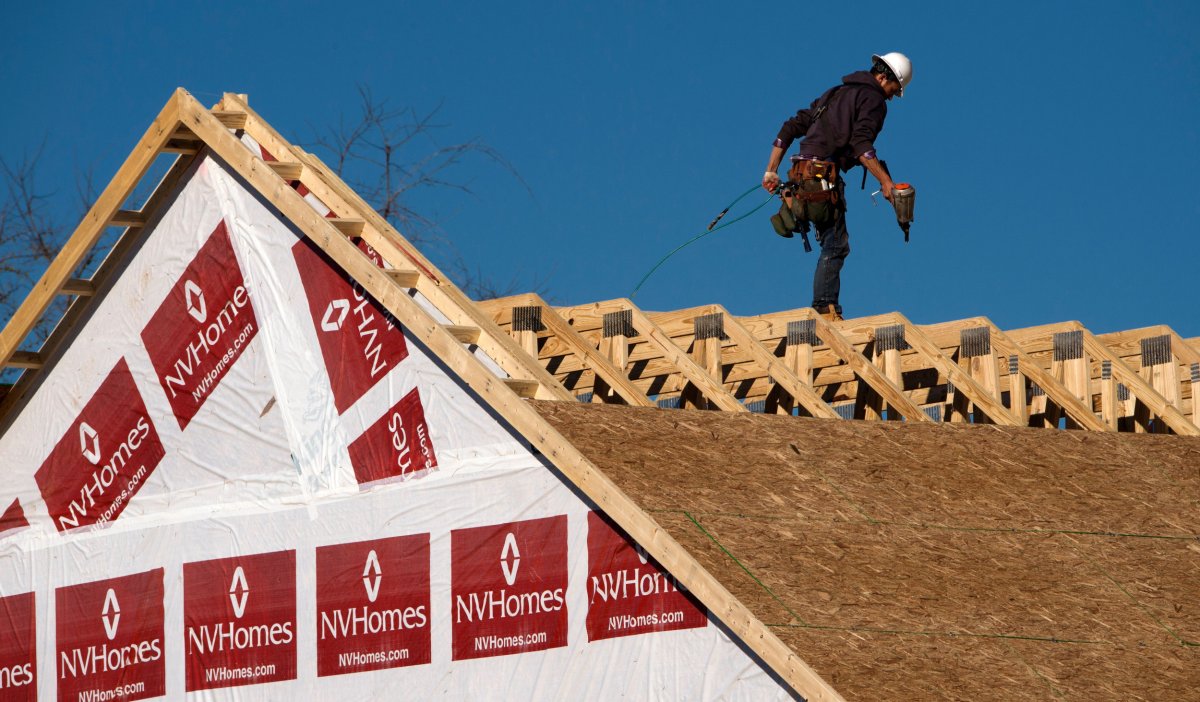Shrinkflation is hitting American homebuyers hard, especially in the C, as a recent study found people are now paying more for smaller properties.
An analysis conducted by USA TODAY Homefront using data from Realtor.com found that the median American home is now 128 square feet smaller than five years ago, and yet it costs $125,000 more.
Shrinkflation, by definition, is what happens when companies reduce a product’s amount or volume per unit without changing its retail price. The concept evokes images of candy bars sneakily getting smaller over the years, or bags of chips and cereal boxes getting emptier, a phenomenon known to outrage consumers.
But the idea can be applied to other sectors as well, including housing. Since 2019, according to the USA TODAY Homefront study, the median U.S. home has become 6 percent smaller, while the price per square foot has surged by a staggering 52 percent.

PAUL J. RICHARDS/AFP via Getty Images
Only 18 out of the 150 major metropolitan areas analyzed by the researchers had seen an increase in home size over the past five years. Colorado Springs, Colorado, was the metro where homes have shrunk the most: the median home in the city is now 22 percent smaller than it was in 2019, but 50 percent more expensive per square foot.
“The shrinking size of homes in the U.S. market, despite rising prices, is driven by a combination of economic factors, particularly inflation, increased construction costs, and the ongoing affordability crisis,” Dayna Drake, researcher with USA TODAY Homefront, told Newsweek.
“Inflation has significantly increased the price of building materials, as well as labor costs, making it more expensive for builders to construct homes,” she added. “Faced with these challenges, builders may be forced to either raise home prices or reduce square footage to maintain some level of affordability for potential buyers.”
Seven of the 10 metros with the most significant size reductions are in the South, with four in North Carolina alone. Here’s a list of the top 10 metros with shrinking home size, with the percentage change of their median square footage between 2019 and 2024.
- Colorado Springs, CO: -21.19 percent
- Charlotte-Concord-Gastonia, NC-SC: -20.26 percent
- New York-Newark-Jersey City, NY-NJ-PA: -19.38 percent
- Urban Honolulu, HI: -18.81 percent
- Hickory-Lenoir-Morganton, NC: -17.67 percent
- Houston-The Woodlands-Sugar Land, TX: -16.88 percent
- Washington-Arlington-Alexandria, D.C., VA, MD, W. VA: -16.03 percent
- San Antonio-New Braunfels, TX: -15.97 percent
- Raleigh-Cary, NC: -15.60 percent
- Winston-Salem, NC: -15.55 percent
According to Drake, the concentration of smaller homes in the South is primarily a result of rapid population growth in states like Texas and North Carolina.
“The influx of new residents has intensified the demand for housing, forcing builders to produce smaller homes to keep up with demand,” she said. “At the same time, land in urban areas is becoming increasingly scarce and builders are opting to reduce square footage to maximize the number of units they can build.”
The increase in home prices across the U.S., coupled with a lack of inventory, has caused the affordability crisis which has thrown many aspiring homebuyers in the country on the sideline of the housing market.
While in theory smaller homes could reduce construction costs and make homeownership more accessible, “the reality of the current housing market complicates this,” Drake said.
“Even as homes shrink in square footage, the cost savings have not been enough to offset rising prices driven by high demand and expensive materials. While builders aim to offer more affordable options through smaller homes, many potential buyers are still priced out of the American dream,” she added.

إرسال تعليق